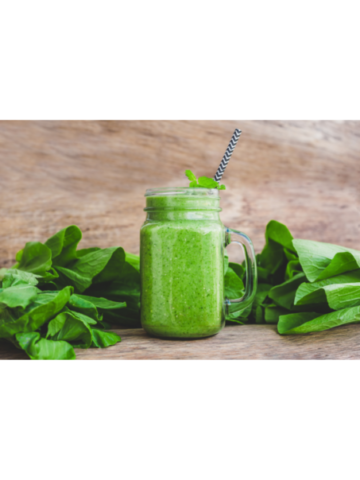Instead of my usual recipe and nutrition topic as a main blog post, I wanted to do something different. I have decided to host a guest blogger who has done tremendous work with an often missed health condition, prediabetes. This topic is near and dear to my heart as I grew up with a mother living with Type 1 diabetes. Most commonly known, Type 2 diabetes, is hurting our nation, but what we don't realize is that there is a health factor leading to this illness, prediabetes. I would like to thank (and welcome), Jill Weisenberger, guest blogger on One Hungry Bunny, for her outstanding background on this condition while sharing her new and extremely informative new book, Prediabetes: A Complete Guide. And, don't forget to view her two delicious recipes mentioned below! Both recipes, while based on foods with carbohydrates, actually have compounds that are good for beating prediabetes.

Prediabetes: A Complete Guide
They likely don’t know it, but plenty of people in your circles have prediabetes. You might too. That’s because 1 out of 3 adults in the US have this disorder. Sadly, a mere 12% or so have the diagnosis. The other 74 million people with prediabetes are unaware that they have this metabolic problem.
Knowledge is power, so the lucky ones are the ones with the diagnosis. It’s smart to discuss your risk for prediabetes and diabetes with your healthcare provider. But right now, you can take this 60-second quiz to assess your risk.
What is Prediabetes?
If your blood sugar level is elevated, but below the level of diabetes, you have prediabetes. Prediabetes is the leading risk factor for type 2 diabetes, but it’s more than that. Most people know that prediabetes and diabetes are diagnosed by measuring blood sugar levels. But what they don’t know is that both prediabetes and type 2 diabetes are far more than just high blood sugar. Prediabetes and type 2 diabetes are characterized by progressive loss of insulin-producing capacity in the presence of insulin resistance.
They are essentially the same disorder at varying degrees of progression. Both prediabetes and type 2 diabetes affect the liver, blood vessels, blood pressure, triglycerides and more. They can lead to chronic inflammation, and both disorders increase the risk for stroke, heart disease and some types of cancer. So, yes, blood sugar levels are critically important, but we can’t lose sight of the bigger picture.
Treatment for Prediabetes
Even though it’s never good to have a metabolic disorder, there’s good news in getting the diagnosis. Because when you know what’s wrong, you can do something about it. Without making changes, more than one-third of people with prediabetes are likely to progress to full-blown diabetes within 4 years and most will have the diagnosis within 10 years. Lifestyle changes are the cornerstone for treatment. The most opportune time to make changes is today. Many people will be able to reverse the disease, and others will at the least slow down its progression. It’s smart to address healthy eating, physical activity, weight loss if necessary, and sleep. There’s lots to say about each of these lifestyle domains, which is what I cover in Prediabetes: A Complete Guide. I also have tons of tips to make behavior changes and lots of worksheets to help you with accountability throughout the process. By the way, some people will also benefit from a medication that improves insulin sensitivity.

Plant Slant Diets for Prediabetes
A lot of people automatically think they have to cut carbohydrates from their diets if they have prediabetes. It sounds logical because carbohydrates do raise blood sugar more than fat or protein. But prediabetes is more complicated than that. It’s really important to look at eating patterns and behaviors that influence insulin resistance. I ask my patients with prediabetes to pay attention to the quality of their carb-rich foods, not just the quantity. We have research suggesting that vegans have about half the risk of developing type 2 diabetes compared to people eating a typical diet. Vegetarian diets and even “plant slant” diets offer protection against type 2 diabetes. By plant slant, I mean diets that include all types of foods, but lean more heavily toward plant proteins than animal proteins.
A few carb-rich foods that I really encourage are oats, barley, beans and lentils. Oats and barley are good choices because of the fiber called beta-glucan, which helps to improve insulin sensitivity. Beans, peas and lentils are also associated with improvements in both short-term and long-term blood sugar levels. And of course, I really push fruits and vegetables because they are consistently associated with less chronic illness.
Here are some recipes that are terrific as part of your prediabetes diet consisting of beta-glucan (in barley) and satiety-boosting resistant starch (in cold potatoes). These nutrients are essential for keeping your blood sugar levels in check!

Recipe for Bean and Barley salad






